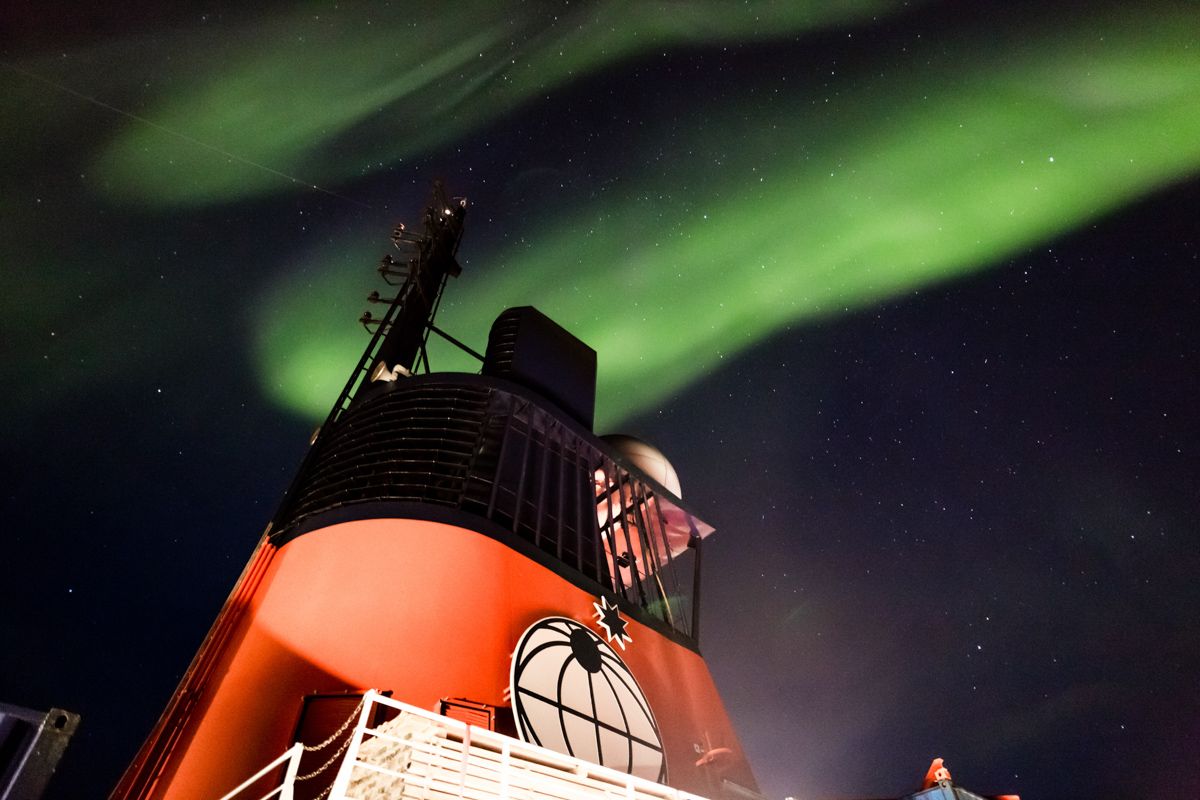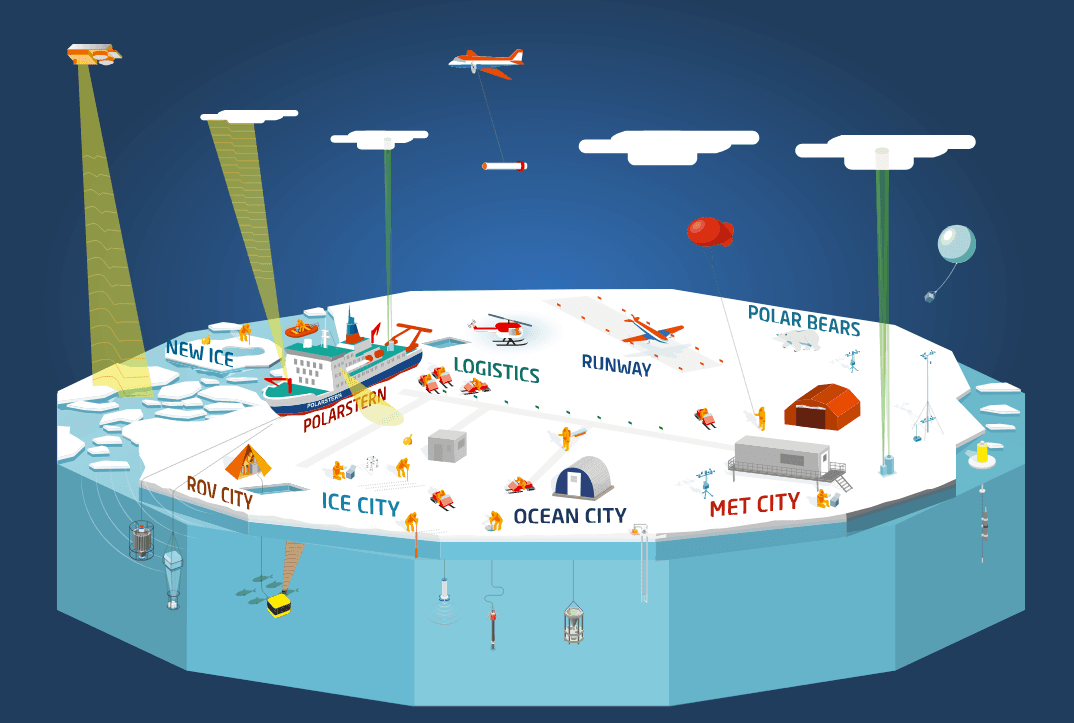How to Park a Ship in Ice

Loaded with research equipment and international scientists, the RV Polarstern icebreaker is steaming towards the central Arctic, searching for the perfect parking spot next to an ice floe.

The RV Polarstern as of September 21, 2019. The crew witnessed Northern Lights before continuing north towards the Central Arctic.
This patch of ice is the star of the MOSAiC show: it’s where hundreds of scientists will live and work for 13 months as part of the Multidisciplinary Drifting Observatory for the Study of Arctic Climate expedition. The ice must be thick enough to support the weight of people and instruments—yet thin and dynamic enough to fuel interesting science. It needs to stay intact for the duration of the year, without breaking up. And it shouldn’t drift into areas where countries have restricted research access.
“We need a chunk of ice that strikes that perfect balance: not too thick, but not too thin,” said Matthew Shupe, MOSAiC co-lead and a CIRES/NOAA scientist whose work is supported by the National Science Foundation and U.S. Department of Energy. “The thin ice is what we really want to study scientifically—but we also need to make sure everyone stays safe.”

The team will be drilling ice cores, setting up ocean sensors, operating unmanned aircraft in the skies above the ship, and more.
The ideal patch of ice is stable—around 1.2 meters (4 feet) thick and 50 kilometers (30 miles) wide—and lies close to other sections of thinner ice and areas of open water, Shupe said. This minimizes the risk of the ice collapsing while still providing scientists with dynamic surroundings so they can study topics such as how ocean-atmosphere interactions change when ice thickens or how freezing impacts the tiny creatures living in the upper surface of the ocean. To answer these questions, Shupe and his colleagues will be drilling ice cores, setting up ocean sensors, operating unmanned aircraft in the skies above the ship, and more.
To freeze the RV Polarstern in the ice pack, the MOSAiC team is taking advantage of conditions in late September, when Arctic sea ice is at its annual low. This allows the ship to steam out while there is open water, stop in a promising spot, and wait for the ocean surface to freeze up, locking her into the ice. This year, the ice is particularly low: NSIDC announced the 2019 sea ice minimum Monday—and it’s tied as the second lowest in history.
And then they’ll drift. Sea ice moves constantly, drifting across the Arctic Ocean along the Transpolar Drift Stream, a wind-driven current flowing from Russia to Greenland. For several months, a team of sea-ice modelers has been pouring over more than a decade of satellite data, analyzing the yearly path of ice across the Arctic. That information will help them find their ideal parking spot, but it’s not straightforward.
“Climate change is changing Arctic ice,” said Thomas Krumpen, an Alfred Wegener Institute scientist and lead researcher on the MOSAiC companion ship, the RV Akademik Fedorov. “In recent years, sea ice has gotten thinner, making it move faster. That means we can no longer use data from the long term, 30-year record to accurately predict ice pathways—we can only use the last decade or so.”

The MOSAiC team will use helicopters to scout the area when searching for the perfect patch of ice.
Krumpen and his team are focused on a zone of Arctic Ocean about 100-200 miles wide. Once the Polarstern approaches the area, an interdisciplinary team will use drones and helicopters to search for that perfect patch of ice and map out a route. They’ll work closely with the ship’s captain to ensure safety comes first as the ship cruises through open water and breaks through thin ice to get into position.
As soon as the ship parks, Shupe said, the scientists must work quickly set up equipment on the ice in dwindling light—the sun will set in mid-October, and months of dark winter will follow.
“In the end, we’ll play our hand, and the Arctic will play its hand,” Shupe said. “And we’ll do our best to read the conditions well enough to get the right play so we can be there for a full year and operate successfully.”
Contacts
Katie Weeman
Past Employee